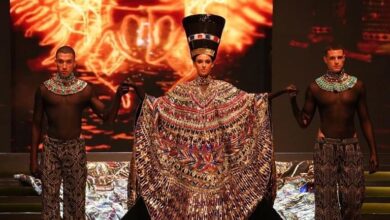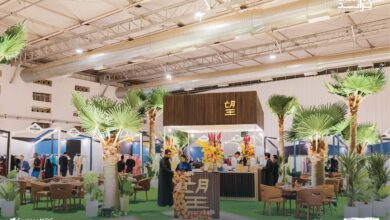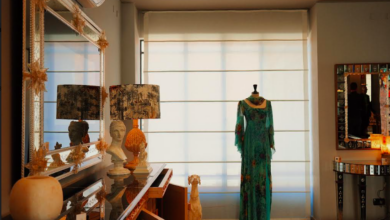Deana Shaaban, upcoming fashion designer, is launching on 13 October her Fall 2010/11 collection with her first ever fashion show.
The 70-piece collection includes ten evening gowns and three wedding dresses. “I've mixed some of this season’s trends with a Victorian/renaissance feel,” says the young designer.
According to Shabaan, the fashion of this era accentuates a woman’s beauty and makes her "glow."
From this season’s new trends, Shaaban chose the vest, and the color gold. “I love using gold, in small amounts. It's classy and chic when used properly,” she says.
Shaaban’s fall collection is all about clean and simple cuts. "The princess cut was my favorite this season but I played around and mixed many fabrics and colors,” she adds.
Shaaban used fabric from Egypt, India, Indonesia and Italy–linens, cotton, satin, and polyester, and for the evening collection, silk, chiffon, organza, tulle and lace. “In some designs, I used three types of fabrics from three different countries,” she says. “Combining fabrics is like merging worlds.”
The designer says her target market is large, with the age group for the collection starting from 16 years, up until 50 years. Because she wanted to address a wider range of people, she planned the collection so it would cater to many tastes and combine many styles.
The designs are not expensive, but neither are they cheap. Shaaban's designs are the type you like to wear and can–just about–afford.
“I hope I stay on that level because raising prices is like betraying your loyal customer,” she says.
Shaaban's favorite local designer is Amina K. According to Shabaan, the fashion industry in the last two years has blossomed due to more young and creative Egyptians being able to travel abroad and become exposed to different cultures and educations. When they return, they are capable of making things happen for themselves, says Shabaan.
Shabaan's philosophy is that a beautiful garment should have a dignifying effect and cause the woman who is wearing it to be remembered even after she leaves an event.
“The woman should wear the clothes and not vice versa," he said. "The woman and the clothes should complement each other, and together they create a masterpiece.”




